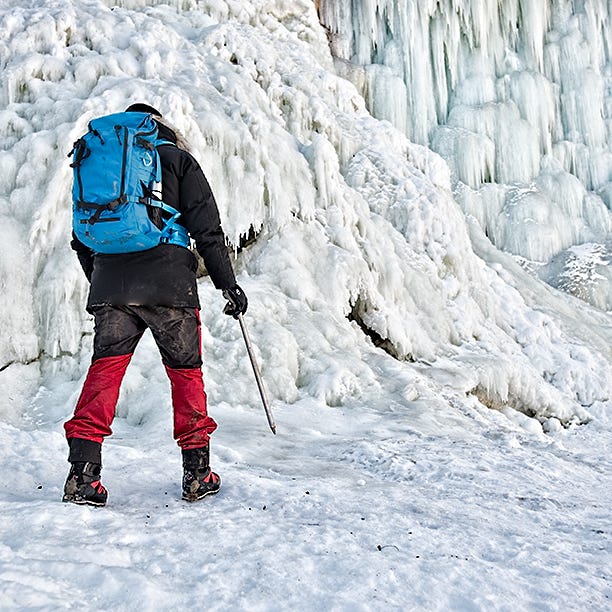
Don’t look now, Northerners, but winter is indeed coming. In fact, fat flakes are falling as I type this in Minneapolis and the forecast holds more for this weekend. If you know me, you know I love winter. There must be something embedded deep inside my Scottish/Scandinavian ancestral soul that looks forward to the prospect of deep snow and a biting wind. I guess maybe it’s the preparation required that I love. You don’t do well in winter if you show up in running shoes and a light jacket. So called “all season” tires don’t cut it here, sorry. I keep an avalanche shovel and tow straps in the car and I actually get excited about having to rake the roof of our house the morning after a big snowfall. I can attest to the aphorism that splitting wood does indeed “warm you twice”, once when you sling the axe and again when you burn the fruits of your effort. I also have a burgeoning sweater collection that I can’t wait to start wearing.
It’s probably no surprise then, that I am an avid armchair polar explorer. Sure, I’d have loved to experience the Arctic or Antarctic in the frostbitten flesh, but aside from a couple of trips to Iceland, my home state’s “polar” vortex weather systems will have to suffice for now. So I scratch the itch by skiing the state park trails, climb behind frozen waterfalls, and tow stranded Hyundais out of snowbanks with the Land Rover. And I read a lot of books about polar exploration. The rich history of expeditions to the Poles has led to a healthy genre of literature, chock full of misery and heroism, grisly death and miraculous survival. Occasionally I’m asked for recommendations from my polar bookshelf, so thought I’d put together a few titles that, if you get started now, should take you through March. All are best read next to a crackling fire with a dram of something smoky in hand.
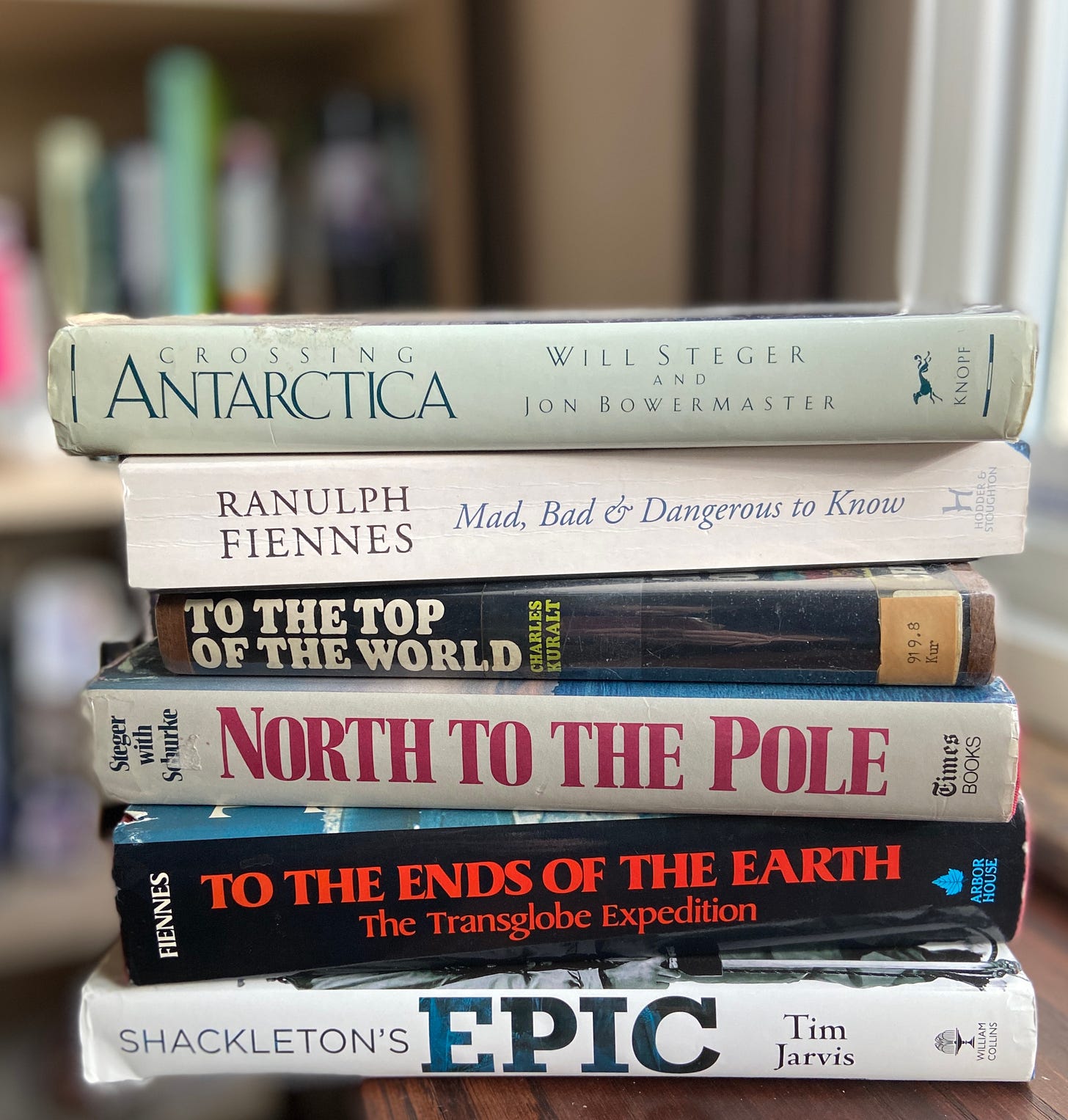
The book that got me started many years ago was “Endurance: Shackleton’s Incredible Voyage” by Alfred Lansing. By now, the story of Ernest Shackleton’s failed 1915 expedition to the South Pole and subsequent successful return, against all odds, is legend, bordering on overplayed. Shackleton’s name has become a byword for heroic leadership and fortitude. But every time I come back to the story of the Endurance, I find something new and interesting. It was in my sophomore year in high school that I chose to write a book report about Lansing’s well known account of Shackleton’s journey and this book, first published in 1959, remains the best of many. A more recent book, similarly titled, “The Endurance: Shackleton’s Legendary Antarctic Expedition”, by Caroline Alexander, is also good, but I recommend starting with Lansing.
Shackleton himself wrote an account of the famous expedition, entitled simply, “South”. I have not read this, but fully intend to, possibly even this winter. Tim Jarvis, an Australian adventurer, who specializes in recreating historic feats using historic means and gear did just that by sailing a replica of Shackelton’s tiny lifeboat, with a team of equally hearty companions, across the Southern Ocean wearing wool and waxed canvas, navigating by sextant and chronometer. The voyage was the subject of a PBS documentary, which is worth watching, and I managed to find Jarvis’s book, “Shackleton’s Epic”, as well, which is fascinating.
Of course, one can’t talk about South Pole expeditions without mention of Robert Falcon Scott’s fateful journey. Scott led the first British team to reach the Pole in 1912, only to discover that Norwegian Roald Amundsen got there first. Devastated, they turned back and Scott and his “Pole” team all died on the ice, a mere 12 miles from their next cache of supplies. It is a cautionary tale and one that couldn’t have been scripted better by Shakespeare. (In fact, there was a terrific play I saw a few years ago, staged outside, in winter, called, “Terra Nova”, by Ted Tally.) But the book about the expedition that is required polar reading is by Apsley Cherry-Gerrard, who was part of the support team left behind at Cape Evans while Scott and his smaller crew headed inland. The book, “The Worst Journey in the World” was written in 1922 but holds up well, thanks to the author’s writing skill, dark humor and firsthand experience on the continent, where he embarked on a side mission to find penguin eggs on the Ross Ice Shelf.
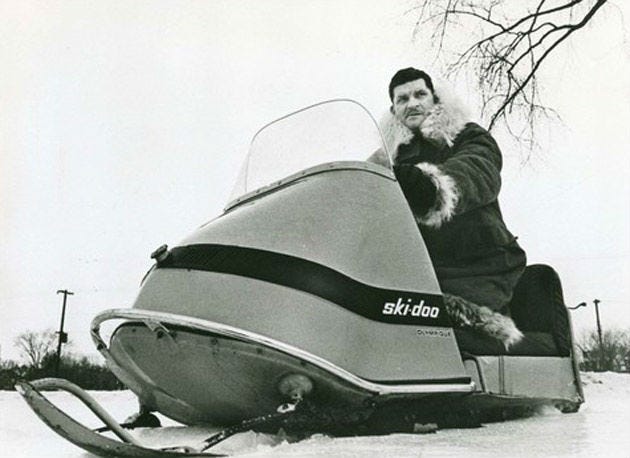
Fast forward to the 1960s and to the North Pole. Amazingly, all previous attempts to reach this northernmost point on the planet had come under question and dispute. In perhaps my favorite story of exploration ever, a Minnesota insurance salesman, Ralph Plaisted, rounded up some hunting buddies and secured a few sponsorships (first Hamilton, then Omega, of interest to watch nerds) and set off on underpowered snowmobiles to make it to the Pole. The first year they attempted it, 1968, they fell short, fraught with problems and major navigational errors. This expedition was chronicled by the well known CBS News personality, Charles Kurault, who wrote a book about it, “To The Top of the World”. Its wittiness is a good match for the quixotic amateurs who are its subject matter, but also does a good job dignifying the ambition and pluck of these most ordinary heroes. The next year, Plaisted and his team succeeded, becoming the first people to undisputedly reach the North Pole by surface means.
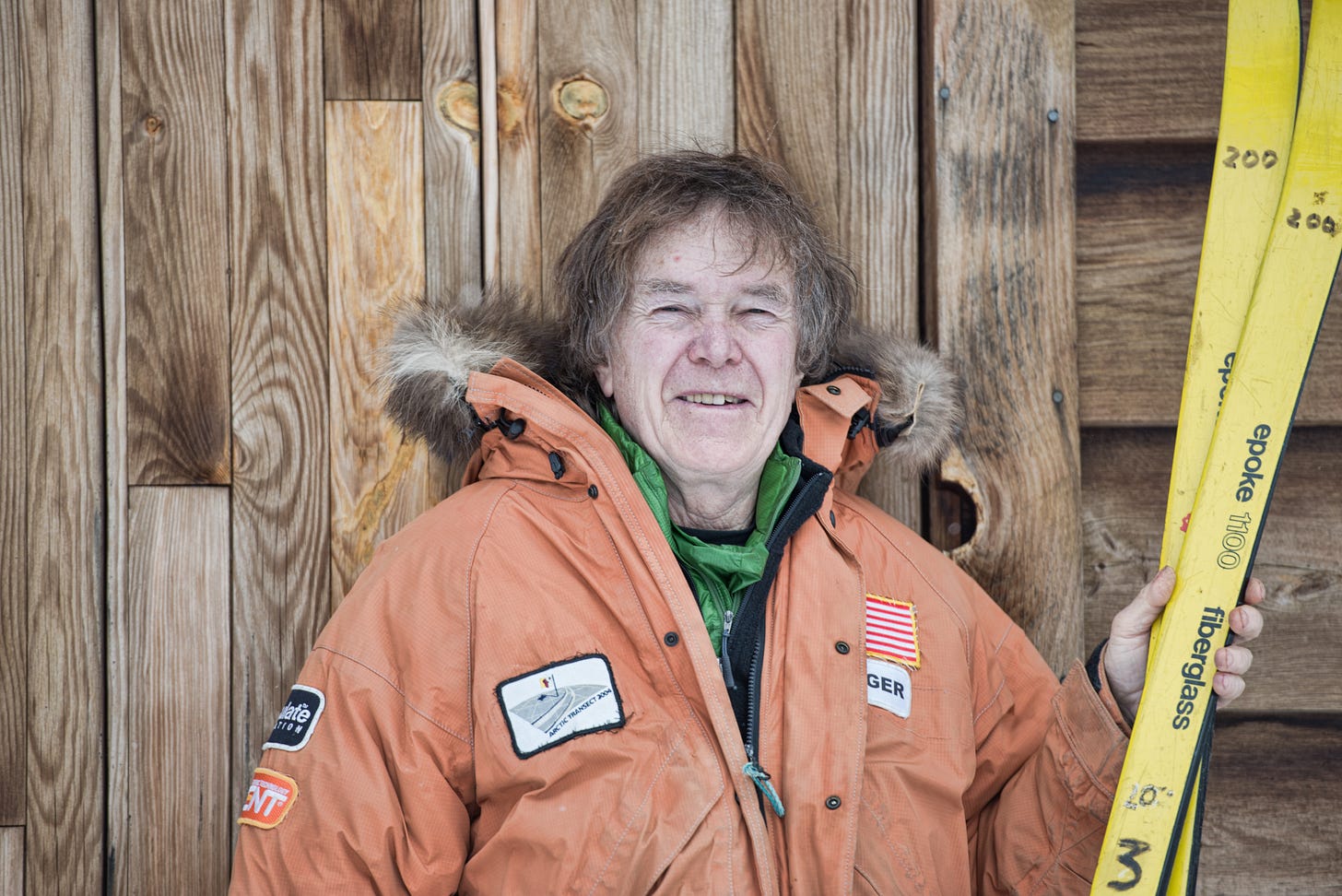
Besides Plaisted, Minnesota has produced its share of other polar heroes, perhaps to no surprise, and at the top of the ziggurat sits Will Steger. Steger led the first unsupported dogsled expedition to the North Pole and the first full traverse of the Antarctic continent by dogsled. His books about both of these expeditions, “North to the Pole”, and “Crossing Antarctica”, are tremendous reading, as Steger is an excellent writer and their accomplishments and challenges were astonishing. Steger pioneered the use of synthetic insulation, the use of bright colors for safety, and strategic pocket placement on jackets that are commonplace today.
Whereas Steger was a humble, “get ‘er done” kind of guy, Ranulph Fiennes has always been larger than life, once called “the world’s great living explorer” for his many accomplishments in mountains, deserts, and the cold places. His life story reads like fiction—auditioning for the James Bond role, blowing up a movie set for fun and getting kicked out of the SAS for it—and his autobiography, “Mad, Bad, and Dangerous to Know” is an entertaining read. Though not solely about his polar exploits, he does seem to have a soft spot for his trips to the far north and south and spills ample ink covering these exploits.
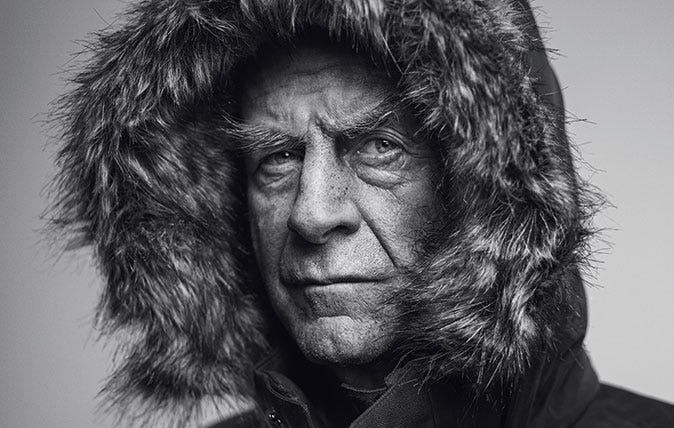
Sticking with Fiennes, perhaps his grandest achievement, in both its audacity and scale, was his Transglobe Expedition of 1978-82, which saw Fiennes and a small team circumnavigate the globe along the polar axis (i.e., crossing both poles). His book about the adventure is called, “To The Ends of the Earth” and is an epic, rollicking tale of bootstrapping the finances, sharing phone lines to make sponsor calls, a small boat journey through the Northwest Passage, and crossing Africa in Land Rovers. Fiennes’ writing is fantastic and full of self deprecating humor.
No doubt, I’ve left a LOT of books off this starter list, some I’ve read, some I need to read. Glaringly missing on my bookshelf are accounts of the great Norwegian journeys of Nansen and Amundsen, and modern Vikings Erling Kagge and Børge Ousland. Swiss-South African Mike Horn, who has done just about everything possible on the planet, most of it human powered, has written a few books as well, and I’d like to also go to the source and read Scott’s and Shackleton’s own journals and accounts of their expeditions. But the eight or so that I listed should get you through the next few months. If you live somewhere cold and snowy, I recommend putting the book down every now and then and going out for a ski, a snowshoe, or just a brisk walk. I guarantee you’ll feel the cold with a new perspective.
Go ahead and drop your own polar bookshelf recommendations in the comments. I’m always looking for good ones to read. And I’ll maybe make this a regular thing, with different themes, such as “mountaineering” bookshelf, “sailing” bookshelf, and so on. But for now, thanks for reading. And stay warm. — JH

I joined Robert Swan on his Last 300 Expedition to the South Pole last year so I'm completely biased, but do check out his Antartica 2041 book. Swan is the first person to walk to both poles. A recent find is Antartica A Biography by David Day. It's a pretty complete history of human exploration on the continent.
If anyone is interested in a more literary exploration of the arctic, I can recommend the Idea of North by Peter Davidson. A very readable account of the concept of the North in literature and culture -- from the Viking sagas to Danish fairy tales to a Mongol expedition into Siberia. In my experience, it goes quite well with a little Ardbeg 10.